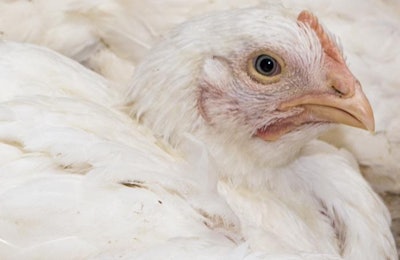
If people truly understood the science behind modern poultry genetics, there would be little justification for the movement toward slower-growing broiler breeds, a University of California-Davis (UCD) extension specialist said.
Speaking at the 2018 Animal Agriculture Alliance Stakeholders Summit on May 3, Alison van Eenennaam, PhD, UCD Cooperative Extension Specialist, animal genomics and biotechnology, said that animal breeders, including poultry breeders “have possibly the most compelling sustainability story of all time.”
But opponents of modern animal agriculture have painted a negative picture of the broiler breeds used in the industry today, advocating for a move to slower-growing broilers, similar to those that were used in the industry in the 1950s. Those people are ignoring the science, she said.
“I am very concerned about the abandonment of science in the general populous and also, quite frankly, by some of the brands in agriculture,” said van Eenennaam.
The modern broiler
It was pointed out by van Eenennam that the 8-week-old body of broiler chicken increased from 0.81 kilograms to 3.14 kilograms over the period from 1957 to 2001, and about 80 percent of that nearly four-fold increase was a result of genetic selection.
But contrary to what some are led to believe, those genetic achievements were attained while still keeping in mind the welfare of the animal.
“An optimal animal is not necessarily maximally productive, it’s optimal for the production system, not maximal in terms of production. As a result of that, if you look at the scientific literature, there is a balance between the economic and well-being traits,” she said.

Alison van Eenennaam | Photo by Roy Graber
Strengths in sustainability
The broiler breeds commonly used today demonstrate that balance.
According to van Eenennam, under current broiler breeding programs,
- The efficiency of meat production is improving at a rate of 2-3 percent per year
- The amount of time to market for a 5-pound bird is reduced by 0.74 days per year
- Breast meat yields for a 5-pound bird increases by 0.5 percent per year
- Feed conversion ratios decrease by 0.025 per year
- Livability improves 0.22 percent per year
- Condemnation rates decrease by 0.7 percent per year
“That’s kind of what I would call a triple win from a sustainability perspective, because they’re more efficiently produced, more economically produced and animal welfare, according to these objective metrics, is improving,” she said.
Had the poultry industry not improved its genetics, in order to produce the same amount of chicken products consumed annually, about 18 billion additional birds would need to be raised, she added.
Claims of slower-growth broiler benefits questioned
Whole Foods Market was identified by van Eenennaam as one of the businesses leading the push to move to slower-growing breeds.
She cited a quote from Theo Weening, the global meat buyer for Whole Foods, who claimed the slow-growing bird “is a much better, healthier chicken and at the same time it’s a much [more] flavorful chicken as well.”
She first questioned the part about the slower-growing bird being healthier.
“Why is growing less than 50 grams per day for 58 days better for welfare than growing 61 grams for 44 days? Could someone please answer that question for me,” she asked. No responses to back up the claims were heard.
Van Eenennaam related a story of how when her infant child grew at a rate that seemed swift, there was only excitement in the family with no concerns about the child’s health.
She also questioned the better taste claims, pointing out that the feed given to the birds and production techniques used under Whole Foods’ criteria are not different than those of modern production.
Given Whole Foods’ support for a less sustainable approach to poultry production, according to van Eenennaam, it is laughable that many of the store’s customers fancy themselves as environmentalists. She pointed out the irony as she showed a picture of an energy-efficient Toyota Prius in the parking lot of a Whole Foods Market store, and suggested that instead, it should be a gas-guzzling Hummer parked in its place.
She added that Whole Foods customers are really, in a sense, saying, “I support less efficient agriculture that has a bigger environmental footprint.”
“There are real consequences to blocking innovation to our animal agriculture systems. This tradeoff is never discussed,” she said. “For these groups to have sustainability initiatives, and then make idiotic decisions based on no objective data is just marketing at its very worst.”


















